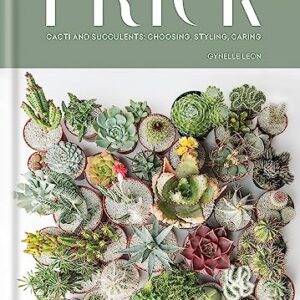If you’re someone who loves the idea of having plants in your home but can’t decide between indoor or outdoor varieties, you’re not alone. Both indoor and outdoor plants have their advantages and require different care techniques to thrive. In this article, we’ll discuss the differences between the two and provide you with helpful care tips for both types.
Indoor vs. Outdoor Plants: What’s the Difference?
Indoor plants are typically plants that can thrive in the controlled environment of your home. These plants are well-suited for growing in pots or containers and can be grown year-round, regardless of the season. They are great for purifying the air in your home and adding a touch of nature to your living space.
On the other hand, outdoor plants are those that are best grown in the garden or in outdoor spaces. These plants rely on natural sunlight, rainfall, and air circulation to thrive. Outdoor plants can include a wide variety of flowers, shrubs, trees, and vegetables, depending on your climate and growing conditions.
Care Tips for Indoor Plants
When it comes to caring for indoor plants, there are a few key factors to keep in mind to ensure they thrive:
1. Light: Indoor plants thrive in bright, indirect sunlight. Place your plants near a window where they can get some sunlight each day, but be sure to avoid direct sunlight, as this can lead to sunburn and damage to the leaves.
2. Watering: Overwatering is one of the most common mistakes when it comes to caring for indoor plants. Make sure to water your plants only when the top inch of soil feels dry to the touch. Use a watering can with a spout to water the soil directly and avoid getting water on the leaves, as this can lead to mold and rot.
3. Humidity: Indoor plants thrive in a humid environment, so be sure to mist your plants regularly or place them on a tray filled with pebbles and water to create a humid microclimate around them.
4. Temperature: Most indoor plants prefer temperatures between 65-75 degrees Fahrenheit during the day and slightly cooler temperatures at night. Avoid placing plants near drafty windows or heating vents, as this can lead to temperature fluctuations that can stress the plant.
5. Fertilizing: Indoor plants benefit from regular fertilizing during the growing season, typically in the spring and summer months. Use a balanced liquid fertilizer every 2-4 weeks to encourage healthy growth and flowering.
Care Tips for Outdoor Plants
Outdoor plants require a different set of care techniques compared to indoor plants. Here are some tips to help your outdoor plants thrive:
1. Sunlight: Outdoor plants require at least 6-8 hours of sunlight per day to thrive. Make sure to choose plants that are suitable for the amount of sunlight in your garden and provide them with the necessary exposure to sunlight.
2. Watering: Outdoor plants require regular watering, especially during hot and dry weather. Water plants at the base to avoid getting the leaves wet, as this can lead to mold and disease. Use a soaker hose or drip irrigation system to ensure deep watering and prevent water runoff.
3. Soil: Outdoor plants thrive in well-draining soil that is rich in organic matter. Improve the soil in your garden by adding compost, aged manure, or other organic amendments to provide plants with the nutrients they need to grow and thrive.
4. Mulching: Mulching helps to retain moisture in the soil, suppress weeds, and regulate soil temperature. Apply a layer of mulch around your plants to help them retain moisture and protect their roots from extreme temperatures.
5. Pruning: Outdoor plants benefit from regular pruning to remove dead or diseased branches, promote air circulation, and shape the plant. Use clean, sharp pruners to make clean cuts and avoid causing damage to the plant.
Indoor vs. Outdoor Plants: Which is Better?
Ultimately, the decision to grow indoor or outdoor plants depends on your personal preferences, growing conditions, and available space. Indoor plants are great for adding greenery to your home and purifying the air, while outdoor plants allow you to create a beautiful garden and enjoy the benefits of gardening in the great outdoors. With the right care and attention, both indoor and outdoor plants can thrive and bring joy to your life.
In conclusion, whether you choose to grow indoor or outdoor plants, it’s important to research the specific care requirements for each type of plant and provide them with the necessary light, water, and nutrients to thrive. By following the care tips outlined in this article, you can create a thriving garden that brings beauty and joy to your life. Happy gardening!






